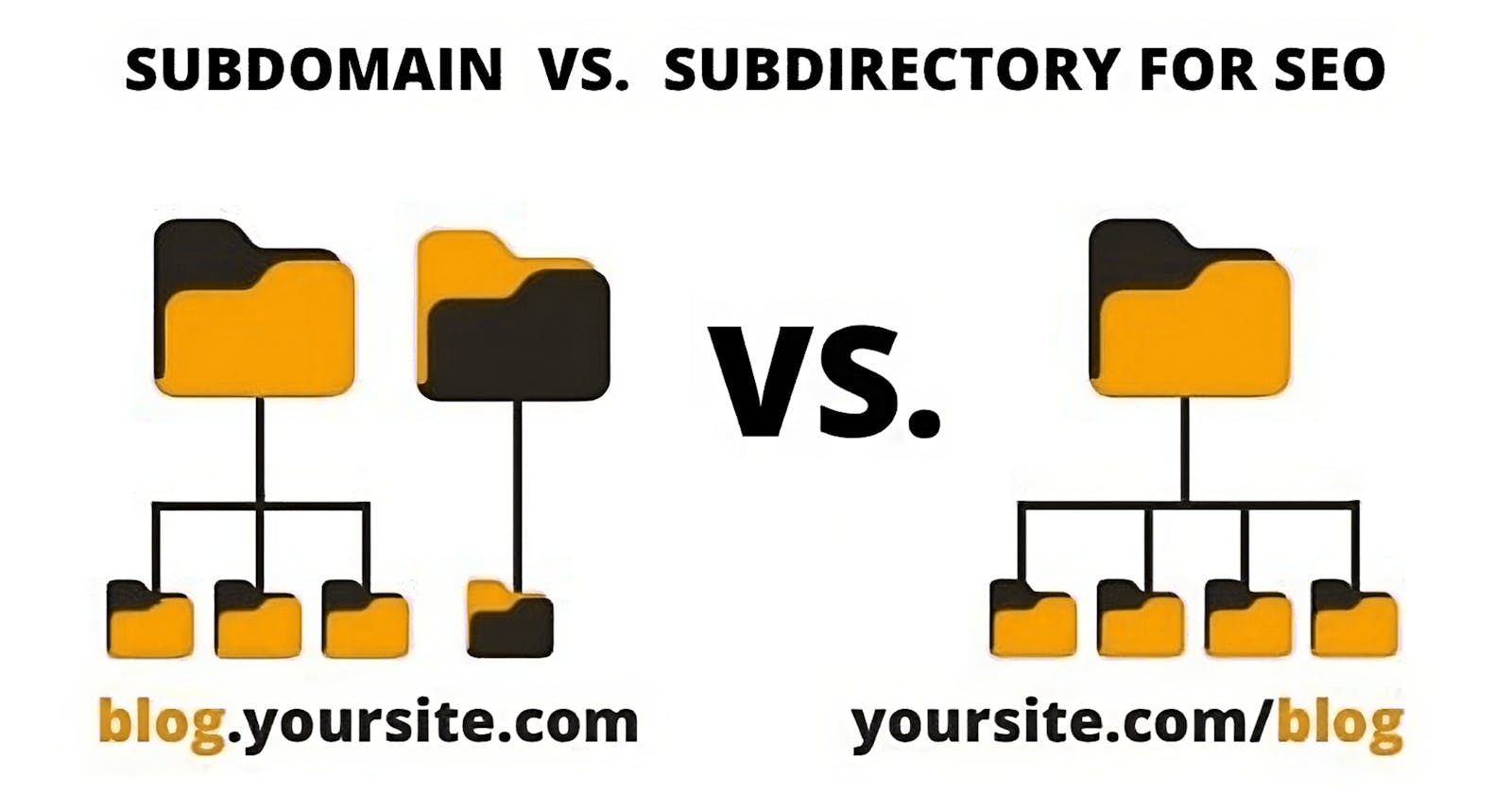Subdomains vs Subdirectories: Which is right for your blog?
When to use a subdomain and when to use a subdirectory for your blog?
Introduction
When starting a blog, one of the first things to consider is where to host it. Two popular options are to use a subdomain or a subdirectory. While both methods allow you to add a blog to your site, they differ in several key areas, including search engine optimization (SEO) and technical implementation. In this article, we'll compare the pros and cons of each approach to help you decide which one is best for your blog.
Subdomains
A subdomain is a domain that is part of a larger domain, but is technically a separate website. It typically appears as a prefix to the main domain, like blog.example.com. Here are some of the benefits and drawbacks of using a subdomain for your blog:
Pros
Separate identity: A subdomain can give your blog a separate identity from the main site, which may be useful if you want to differentiate your blog from the rest of your content.
Easy setup: Setting up a subdomain is relatively easy, and most web hosts allow you to create one with just a few clicks.
Scalability: If your blog grows in popularity and you need more resources to handle traffic, you can upgrade your subdomain to a dedicated server or cloud hosting. Internationalization: Subdomains can be a useful way to target international audiences. For example, if you have a blog in English and want to offer a version in Spanish, you could create a subdomain like es.example.com.
Cons
SEO challenges: While subdomains are a good way to organize content, search engines may view them as separate websites with less authority than the main site. This means it may be more difficult to rank well in search engine results pages (SERPs).
Backlink dilution: When you use a subdomain, any backlinks to your blog will not help the main site's SEO. This is because the subdomain is seen as a separate website with its own backlink profile.
Technical complexity: Setting up a subdomain requires more technical expertise than using a subdirectory. You may need to create a separate hosting account, configure DNS settings, and manage multiple databases.
Subdirectories
A subdirectory is a folder on your main domain that contains your blog content. It typically appears as a suffix to the main domain, like example.com/blog. Here are some of the benefits and drawbacks of using a subdirectory for your blog:
Pros
SEO benefits: Using a subdirectory can give your blog a boost in search engine rankings. This is because the subdirectory is seen as part of the main site, and any authority the main site has is passed on to the blog.
Easy setup: Most content management systems (CMS) allow you to set up a blog within a subdirectory with minimal technical knowledge.
Backlink authority: Any backlinks to your blog will also help the main site's SEO, as they are seen as part of the same domain.
Consistency: By using a subdirectory, you can keep your blog consistent with the rest of your site's branding and design.
Cons
Limited scalability: If your blog grows in popularity, you may need to upgrade your hosting plan to handle the traffic. This can be more difficult than upgrading a subdomain, as it may require a more expensive plan or dedicated server.
Less flexibility: If you want to create a separate identity for your blog, using a subdirectory may not be the best choice. It can be more difficult to differentiate your blog from the rest of your content with a subdirectory.
In conclusion, the decision to use subdomains or subdirectories for blogs depends on the specific needs and goals of the website. Subdomains may be easier to set up and can be useful for targeting specific markets or branding purposes, but they can also dilute keywords and backlinks, making it harder for the root domain to rank in search results.
On the other hand, subdirectories may require more setup and configuration, but they can help consolidate keyword and backlink authority, which can improve the overall SEO of the website. In addition, subdirectories are already built into basic websites, making them a more straightforward option for many website owners.
Based on the points discussed in this article, it is clear that subdirectories are a superior option for blogs, particularly for website owners who want to improve their SEO. While subdomains may be appealing for branding purposes, they can dilute keyword and backlink authority, which can ultimately hurt the SEO of the root domain.
Overall, the decision to use subdomains or subdirectories for blogs requires careful consideration of the specific needs and goals of the website, as well as an understanding of the potential trade-offs and benefits of each approach.
Some Industry References
A study by Moz in 2014 also found that using subdirectories was better for SEO than using subdomains. The study analyzed 90,000 root domains and found that subdirectories were more likely to rank higher in SERPs than subdomains. Check out a video explainer here.
Google’s own John Mueller has also stated that subdirectories are generally better than subdomains for SEO, when the content is related to the site. In a webmaster hangout in 2018, Mueller said that it’s easier for Google to understand the structure and hierarchy of a website that uses subdirectories, as opposed to one that uses subdomains.
Here's a great in-depth article from Semrush on this topic.
Conclusion
These studies and statements from industry experts suggest that using subdirectories can have SEO benefits compared to subdomains. However, it’s important to note that there are many factors that can impact a website’s SEO, and using subdirectories alone is not a guaranteed way to improve SEO.
